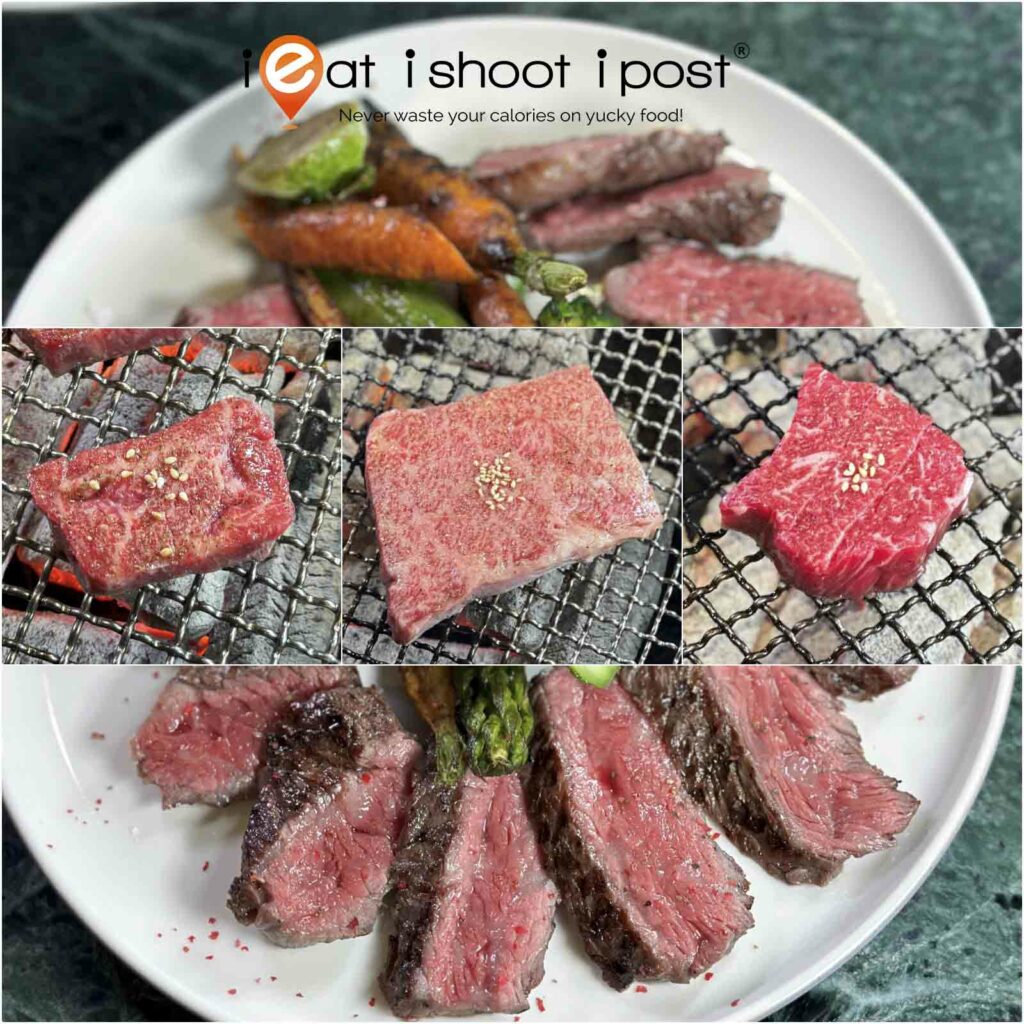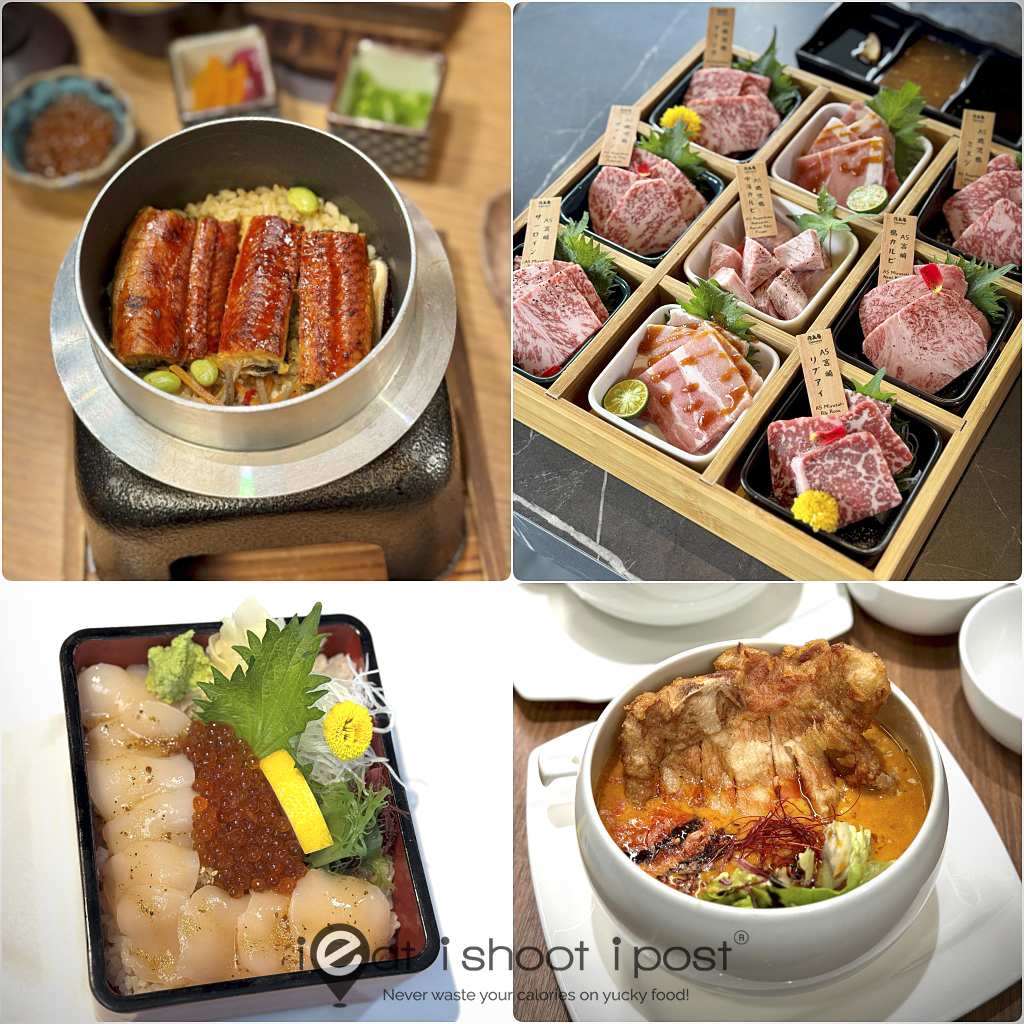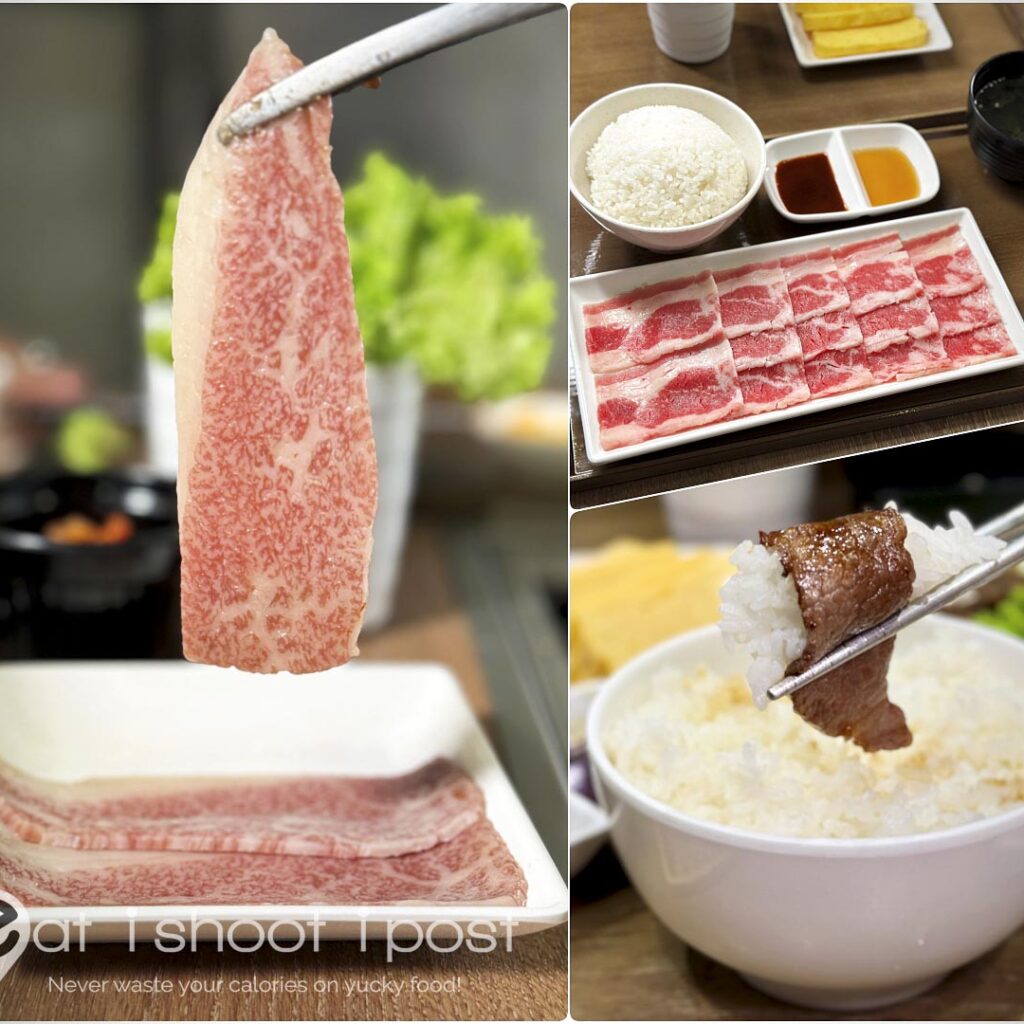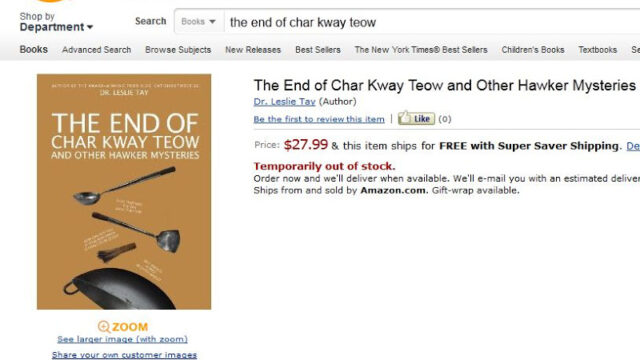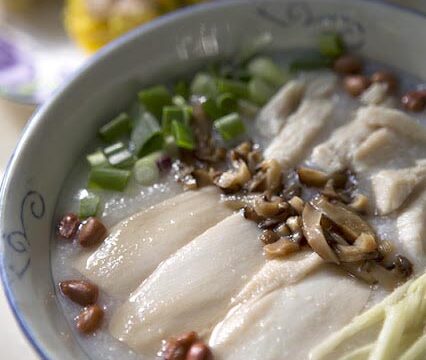
The inspiration for the next series of posts came from watching this episode of the Korean food drama, Gourmet (Sik Gaek ??) where the protagonist, Sung Chan took part in a beef tasting contest in which he had to identify different cuts of beef blindfolded! This got me really intrigued, and I told myself that one day, I would want to do a beef deGYUstation myself.
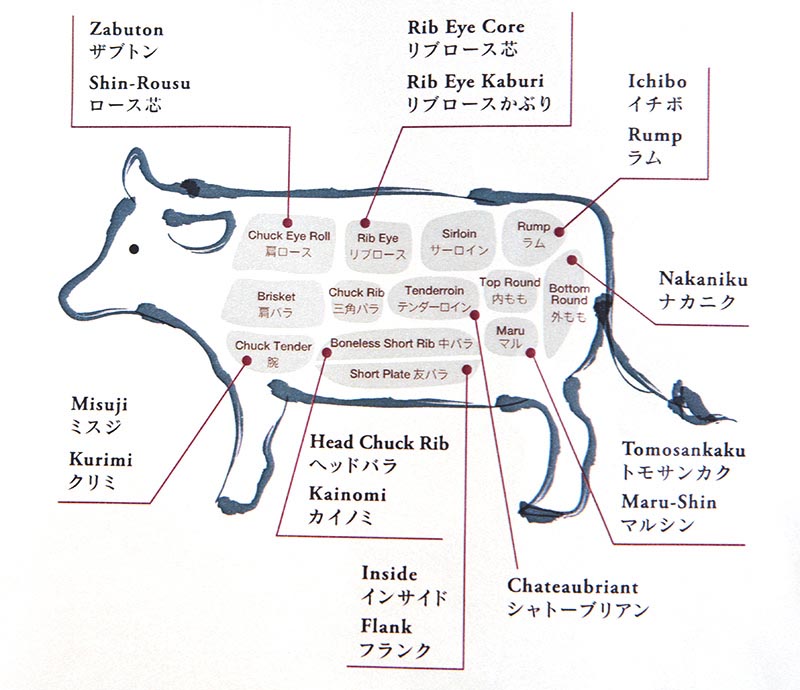
One of the best ways to experience such a deGYUstation is to dine Yakiniku style. When I was in Tokyo recently, my friend Hisato brought me to a Yakiniku restaurant and we literally ate every part of the cow including the Naizou (innards). In Singapore, not only is there a restriction on the importation of innards, most Yakiniku restaurants only bring in selected parts of the cow. So most of us would be more familiar with the popular cuts like Ribeye, Sirloin and Short Rib.
The opportunity for my deGYUstation arose when my friend Shinji informed me that Magosaburou actually imports the whole cow for their restaurant. According to the people at Magosaburou, their Wagyu experts went all around Japan looking for the best Wagyu and finally chose Kurohana Wagyu from Kumamoto prefecture (Kyushu). In order to be able to serve this beef in Singapore, they had to import the whole cow in themselves instead of just selected cuts. This means that not only are they the only ones in Singapore that serve Kurohana Wagyu, they also serve some of the rarer cuts of meat which you can only get when you import the whole cow!
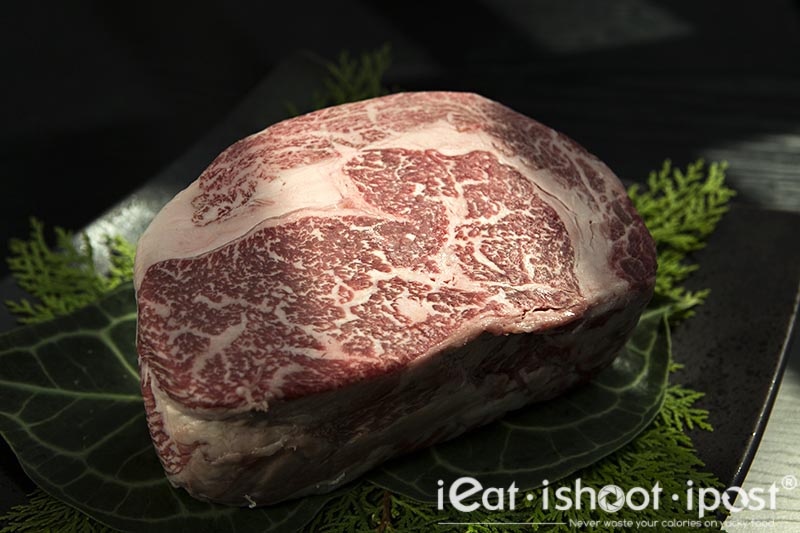
Let’s start our deGYUstation with the more familiar cuts before we get to the more esoteric ones. The Ribeye is a great place to start as it also happens to be my favourite cut for steaks. I have to emphasize “for steaks” because all parts of the beef cattle are delicious if they are cooked in the right way. So if I am thinking of Cantonese style stewed beef, then the brisket would have been my favourite cut. But when it comes to a beef steak, Ribeye is king. In fact, if I had my way, I would be only eating the Ribeye cap, which the Japanese call “Kaburi”. This is the thin flap of meat around the rim of the Ribeye steak which is the most most tender and flavourful part of the whole cow.
The Ribeye is essentially made up of three muscles. The large central one is the longissimus dorsi muscle with is a long muscle that stretches down the back of the cow. There are two muscles that constitute the cap, viz the spinalis dorsi and multifidus dorsi. These are two flat muscles that lie next to the backbone of the cattle and are very tender, extremely marbled and very flavourful. Some chefs call this the “butter” of the cow. I call it beef heaven.
Because these cuts are generally quite tender to begin with, most Yakiniku restaurants would cut them relatively thick, just shy of a centimetre. When you sink your teeth into a slice of nicely grilled Ribeye, you will be rewarded with a burst of beefy juices. Now close your eyes and allow the aroma waft up your nose, let the umami flavour linger at the back of your palate for a while and wash it all down with a sip of sake! Ah….
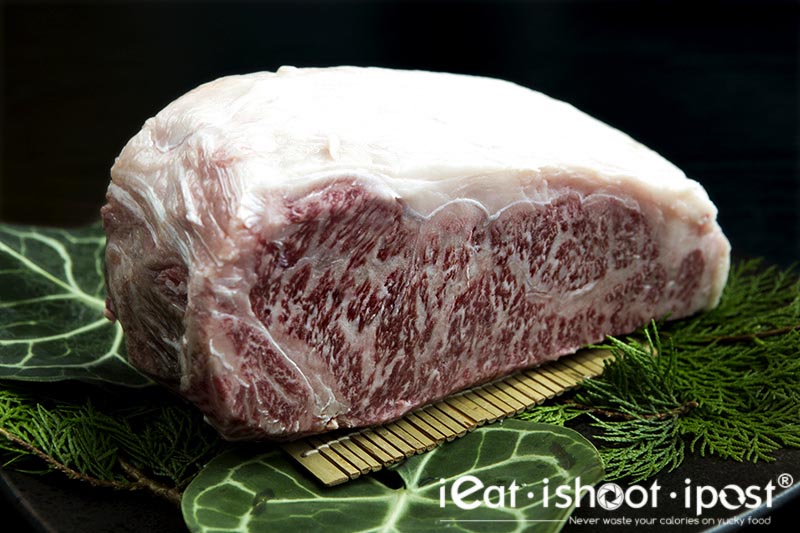
As you move down the back of the cow to where the rib cage ends (13th rib), you get to the Sirloin (Shortloin in the US) primal. This cut is characterized by a thick layer of fat on one side of the steak. Being a non-weight bearing muscle, this is a very tender cut and very popular for steaks. The texture, juiciness and flavour of the Sirloin is very similar to the centre part of the Ribeye because it is basically the continuation of the same longissimus dorsi muscle down the back of the cow.
Contrary to what is popularly believed. The Sirloin is not called “Sir” loin to denote its premium status amongst steaks. Rather, it was derived from the old French “surlonge” which means “above the loins”.
In Singapore, a Sirloin steak usually refers to the Shortloin portion of the cattle which is the portion of the cattle between the ribcage and the pelvic bone. This primal is a little more confusing because the British and Americans define their Sirloin primal differently. The Sirloin primal (US) covers the entire hip area of the cattle and is divided into Top Sirloin, Bottom Sirloin, Sirloin Tip and Sirloin Cap. The premium cut is the Striploin which is commonly called the Sirloin in Singapore and it should look like the photo above. Some restaurants might serve Sirloin Tip or Top Sirloin and price it very competitively. These are fine and are perfectly good meats but they should be not be confused with a proper Sirloin steak.

The tenderloin is a favourite amongst the ladies as it is the most tender part of the cow and usually contains very little fat. However, the marbling can still be quite intense in the Wagyu cattle as you can see from the photo above. Technically, this is a single muscle called the psoas major and because it doesn’t do much work, it is very tender. Since there is only 1 kg of it in a 500kg cattle, it is also very expensive.
The Tenderloin is situated right next to the Sirloin and separated by a thin bone (transverse process of the lumbar vertebra). You get a T-Bone Steak when both Sirloin and Tenderloin are cut together with the bone. The Tenderloin gets thicker nearer to the rump end of the cow and a T-bone steak cut from this region is sometimes called a Porterhouse steak. The same Tenderloin from this region served without the bone is called a Chateaubriand steak which is basically the thickest part of the Tenderloin.
I personally don’t like the Tenderloin because of its lack of flavour. The lack of marbling is sometimes rectified with a slice of bacon wrapped round the meat in the case of really lean beef. However, this is not required in the Wagyu since it can still be quite marbled and flavourful. However, I would rather pay less for the other cuts which are more flavourful and leave the tenderloin for those who need dentures.
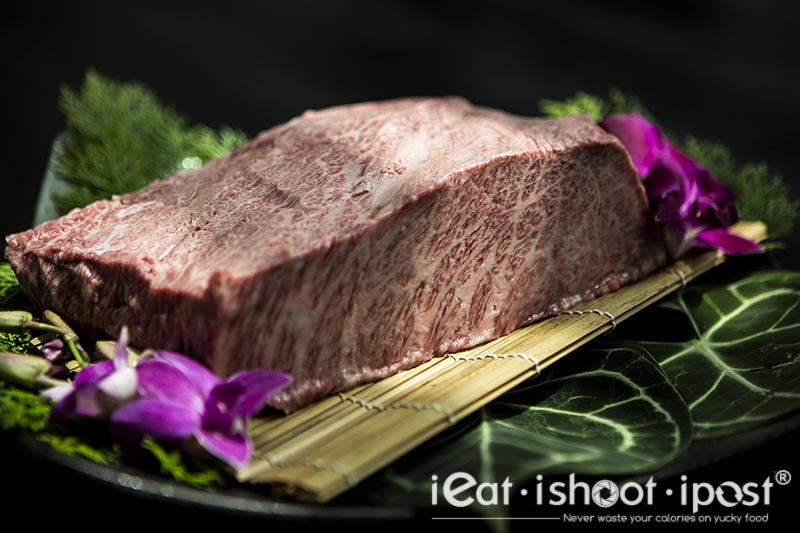
Now we move on to the more interesting cuts. Let’s start with the portion of the cow that is just behind the neck, a large primal known as the Chuck. In the West, Chuck is not traditionally considered prime meat for steaks. It is usually used for stews and ground to make hamburgers. However, with the intensity of marbling in the Wagyu cattle, some parts of the Chuck are actually very good for Yakiniku and are in fact considered Prime Yakiniku cuts.
The first cut that we will talk about is the Zabuton which is so named because of its resemblance to the flat Japanese cushions used for sitting. This cut is getting very popular as it is tender and flavourful. Go into any respectable Yakiniku restaurant and you should be able to ask for Zabuton.
The Zabuton is cut from the Chuck Roll which is the portion of the Chuck between the ribcage and the shoulder blade. Here is an excellent Video showing how the Chuck Roll is divided into the Chuck Eye Roll and the Chuck Underblade. The Zabuton is the Chuck Underblade (aka Chuck flap) which is the serratus ventralis muscle attached to the outside the ribcage. All these muscles which line the ribcage are excellent as Karubi as they have excellent flavour and well marbled. Rather than being just tender and juicy, they have a bit more bite and can be pleasantly chewy.
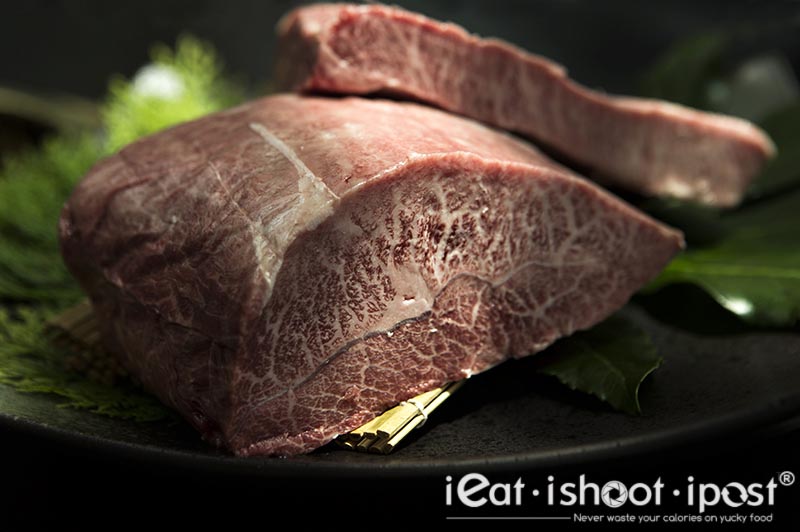
Another very popular Yakiniku cut taken from the Chuck primal is the Misuji. This cut is easy to recognize because it is shaped as a leaf with a line of connective tissue in the centre. The Misuji is also cut from the Chuck Primal but this time from the shoulder clod. (ie outside the shoulder blade). It is a club shaped muscle that lies next to the shoulder blade known anatomically as the infraspinatus (infra-below, spinatus – spine) muscle. You might sometimes see this sold as oyster blade, top blade, or flatiron steaks.
Information updated 27 Nov 2019
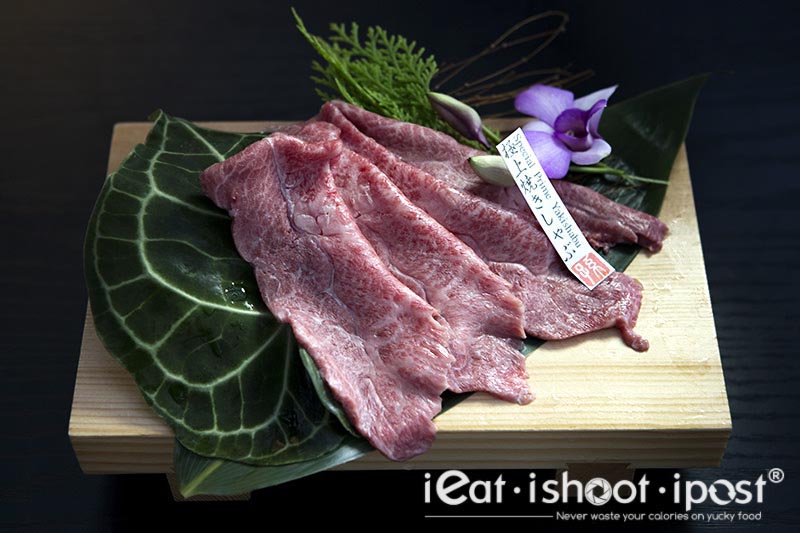
At Magosabarou, they serve the Misuji “Yakishabu” style meaning that the meat is sliced thin like how it would be cut for Shabu Shabu except that it is grilled instead, hence the name. The meat is amazingly tender but still retains some bite and has a nice sweetness that is released when chewed.

Sankaku Karubi is considered to be the “King” of Karubi because of its outstanding marbling and flavour. This meat is taken from the Chuck Short Rib which is essentially the meat attached to the outside of the ribcage in between the forelegs of the cattle. This cut is essentially the serratus ventralis muscle which lie over ribs 2 to 5. From ribs 6 to 12 the same muscle is cut into “Short Ribs” which is part of the Short Plate primal. The Japanese call it the “Sankaku” (jap – 3 corners) Karubi because of its triangular shape.
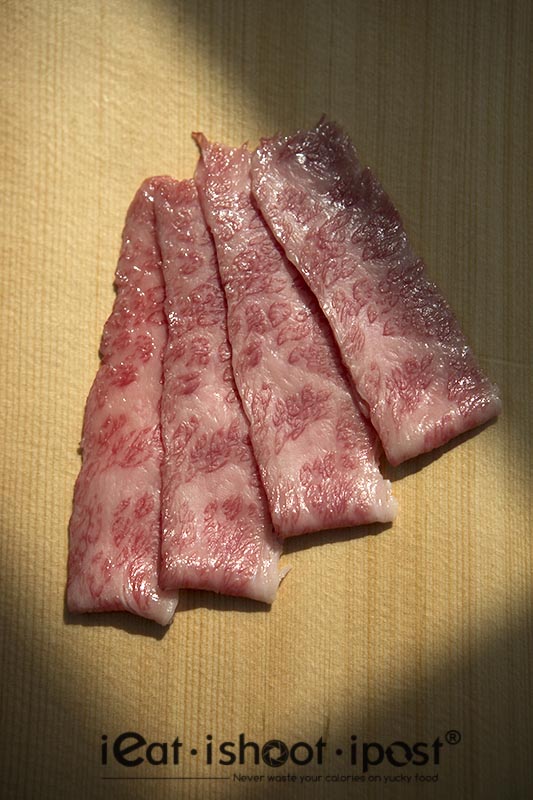
Needless to say, the Sankaku Karubi is one of the most beautiful and distinct slice of meat that you will ever get in Yakinku. The meat is tender, bouncy and very juicy. However I did find that A5 grade Karubi can be a tad too rich and would prefer something with a bit more meat. Having said that , a slice or two of Sankaku Karubi is great to have with some of the other cuts.
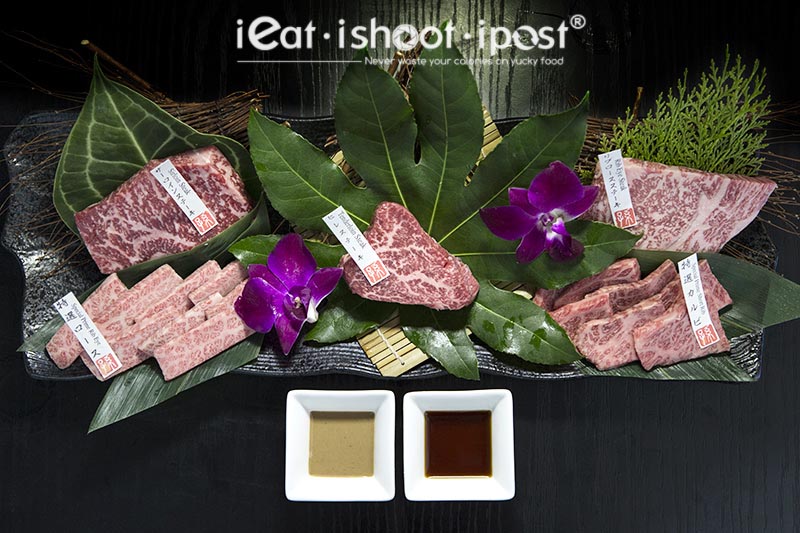
Conclusion
That concludes part one of the Japanese Yakiniku cuts where we explore the cuts of meat from the back and forequarters of the cow. In part two, we will be looking at the lower portion as well as the hind quarters. The meats in these portions may be foreign to the steak lover, but some of them are excellent for Yakiniku! In the meantime, if you have a need for meat, Magosabarou is a great place to enjoy a Yakiniku meal as they butcher the whole cow so you can order the more exotic and rarer cuts of beef.
Set Menu with 5 petite appetizers followed by four cuts of beef, viz Sankaku Karubi, Misuji, Zabuton, Brisket accompanied by steamed vegetables, Hokkaido Scallop, King Prawn, Dessert and Coffee for $80++. (Dependent on availability of the beef cuts)
Please call to reserve and mention the ieatishootipost set. Offer valid till end September 2012.
Join our Facebook contest and stand a chance to win a $100 dining voucher! Click here for details.

Useful Links:
1. Major Muscles of the Carcass
2. Canada Beef Anatomical Guide – Useful flash animation
3. Cow Muscle profiling – University of Nebraska
4. US Beef Export Federation – Excellent animated site for beef cutting
5. Youtube Video on cutting the beef forequarter by Michael Cross
6. Beef Sirloin – Explains the 11 different Sirloin cuts
References:
1. The Art of Beef Cutting, Kari Underly, Wiley 2011
2. Japanese Beef Products Guide Book. MAFF Japan. Downloadable PDF
This article was made possible with the help of Magosaburou Restaurant.



